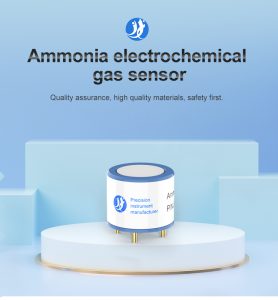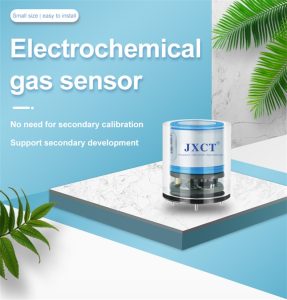Air pollution is a pressing global issue that poses significant risks to human health and the environment. Monitoring air quality is crucial for understanding pollution levels, identifying sources of contamination, and implementing effective mitigation strategies. Advancements in gas sensor technology have revolutionized air quality monitoring, enabling more accurate and comprehensive measurements. This article explores the latest advancements in gas sensor technology and their role in enhancing air quality monitoring.
Understanding Gas Sensors:
Gas sensors are devices that detect and measure the presence and concentration of specific gases in the surrounding environment. They play a vital role in air quality monitoring by providing real-time data on pollutant levels. Gas sensors employ various sensing principles, including electrochemical, optical, and semiconductor-based methods, to detect different gases such as nitrogen dioxide (NO2), ozone (O3), carbon monoxide (CO), sulfur dioxide (SO2), and volatile organic compounds (VOCs).
Advancements in Gas Sensor Technology:
Recent years have witnessed remarkable advancements in gas sensor technology, leading to improved performance, sensitivity, selectivity, and reliability. Some notable advancements include:
Miniaturization and Portability: Gas sensors have become smaller, more compact, and portable, allowing for easy deployment in various settings, including both indoor and outdoor environments. Miniaturization has enabled the development of wearable gas sensors, facilitating personal exposure monitoring and enhancing our understanding of individual-level air quality.
Selectivity and Sensitivity: Modern gas sensors exhibit enhanced selectivity, enabling the detection and differentiation of multiple gases simultaneously. Improved sensor materials and advanced signal processing algorithms contribute to higher sensitivity and the ability to detect trace levels of pollutants. This advancement allows for more accurate and precise monitoring of air quality.
Low-power and Wireless Connectivity: Gas sensors now consume less power, making them suitable for long-term monitoring and remote applications. Integration with wireless communication technologies, such as Bluetooth and Wi-Fi, enables real-time data transmission and remote monitoring networks. This connectivity enhances the scalability and coverage of air quality monitoring systems.
Internet of Things (IoT) Integration: Gas sensors are increasingly being integrated into IoT platforms, creating interconnected networks of sensors that can communicate and share data. This integration allows for centralized data collection, analysis, and visualization, enabling stakeholders to access and interpret air quality data conveniently.
Applications in Air Quality Monitoring:
Advancements in gas sensor technology have significantly improved air quality monitoring practices. These sensors find applications in various settings:
Urban Air Quality Monitoring: Gas sensors deployed in urban areas provide real-time data on pollutants emitted by vehicles, industries, and other anthropogenic sources. This information aids in assessing air pollution levels, identifying hotspots, and implementing targeted measures to reduce emissions and improve air quality for urban residents.
Indoor Air Quality Monitoring: Gas sensors are used to monitor indoor environments, including homes, offices, schools, and hospitals. They help detect and quantify pollutants such as VOCs, formaldehyde, and radon, which can originate from building materials, appliances, cleaning products, and other sources. Monitoring indoor air quality is crucial for protecting human health and ensuring comfortable living and working conditions.
Industrial Emission Monitoring: Gas sensors play a vital role in monitoring and controlling industrial emissions. By continuously measuring pollutant levels in stack gases, these sensors enable industries to comply with emission regulations, optimize process efficiency, and identify malfunctioning equipment that may contribute to air pollution.
Personal Exposure Monitoring: Wearable gas sensors allow individuals to monitor their personal exposure to pollutants in real-time. This information helps raise awareness about potential health risks and promotes behavior modifications, such as avoiding high-pollution areas or adjusting daily activities to minimize exposure.
Challenges and Future Directions:
While advancements in gas sensor technology have greatly improved air quality monitoring, challenges remain. Calibration, drift, cross-sensitivity, and interference from environmental factors can affect sensor accuracy. Additionally, the integration of multiple gas sensors into comprehensive monitoring systems and the interpretation of large datasets pose challenges in terms of data processing and analysis.
Future directions for gas sensor technology include improving durability and stability, reducing power consumption, enhancin
 : +86 155 8830 2704
: +86 155 8830 2704 : jxdziot@gmail.com
: jxdziot@gmail.com
